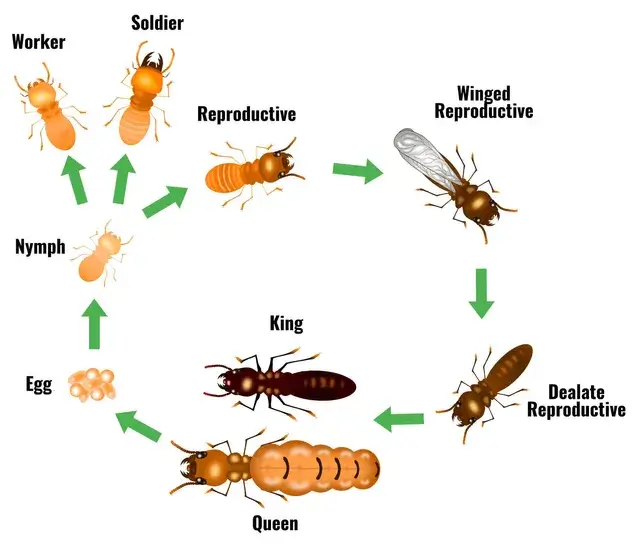
Termites, often referred to as the silent destroyers, can wreak havoc on homes and structures if left unchecked. Understanding the lifecycle of these elusive insects is crucial for effective termite control and prevention. In this blog post, we delve into the intricate stages of a termite's lifecycle, shedding light on the habits and vulnerabilities that homeowners need to be aware of.
The Egg Stage: The termite lifecycle begins with eggs laid by the queen, the primary reproductive member of the colony. These eggs are small, translucent, and typically found within specialized chambers in the colony. The queen's ability to lay thousands of eggs daily lays the foundation for termite populations to grow rapidly.
The Nymph Stage: Once the eggs hatch, termite larvae, or nymphs, emerge. Nymphs undergo a series of molts, shedding their exoskeletons as they grow. This stage is crucial for the development of worker, soldier, and reproductive termites, each of which plays a distinct role within the colony.
Worker Termites: Worker termites are the backbone of the colony. They are responsible for tasks such as foraging for food, building and repairing tunnels, and caring for the eggs and nymphs. These termites lack wings and are typically pale in color, making them adept at staying hidden within the nest or wood they infest.
Soldier Termites: Soldier termites, equipped with large jaws or mandibles, are tasked with defending the colony from predators. While they lack the ability to reproduce, soldiers play a crucial role in safeguarding the queen and the overall termite community.
Reproductive Termites: When a termite colony reaches maturity, reproductive termites, also known as alates or swarmers, are produced. These individuals develop wings, allowing them to leave the nest in search of a mate and establish new colonies. The swarming event, often triggered by environmental conditions like warm and humid weather, marks a critical phase in the termite lifecycle.
The Mating Flight: During the mating flight, male and female reproductive termites pair up and search for suitable locations to start a new colony. Once they find a suitable spot, they shed their wings, symbolizing the beginning of their life together as king and queen of a new termite colony.
The Queen's Role: The termite queen, a remarkable aspect of termite colonies, has an exceptionally long lifespan and can continue laying eggs for many years. Her role is pivotal in sustaining the colony's growth and ensuring its longevity.
Understanding the lifecycle of termites is fundamental to implementing effective control and prevention strategies. By familiarizing ourselves with the habits and roles of these insects at each stage of their lifecycle, we can better appreciate the challenges they pose and take proactive measures to protect our homes. Regular inspections, timely interventions, and a comprehensive understanding of termite behavior are essential in the ongoing battle against these silent but destructive pests. Stay informed, stay vigilant, and safeguard your home against the stealthy invaders.